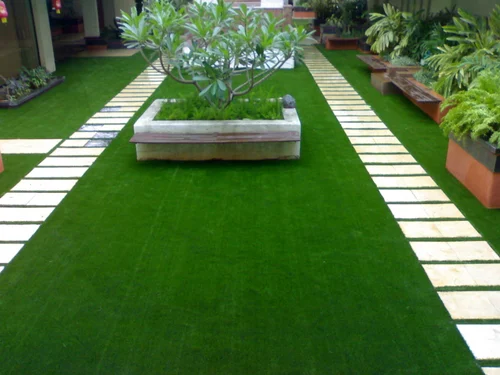
The Environmental Impact of Artificial Grass: Separating Myth from Reality
Artificial grass, synthetic turf or fake grass has gained popularity in Sydney’s vast urban area. Artificial grass offers a viable alternative to natural grass, with significant benefits in minimising chemical pollution. To better understand the environmental implications of artificial grass, including crucial aspects such as water usage, chemical exposure, waste generation, and biodiversity, it is essential to examine its effects thoroughly. This article, focusing on alternatives such as Sydney artificial grass, dispels myths and sheds light on its environmental impact, contributing to a natural flow of information.
The top five items on this list are as follows that focus on the environmental impact of artificial grass:
Water Conservation
The ability of artificial grass to conserve water is one of its main advantages. This becomes even more significant in drought-prone areas like Sydney, where reducing water consumption is crucial. Natural grass demands regular watering to maintain its lush appearance, resulting in substantial water usage. However, Sydney artificial grass eliminates the need for watering, effectively conserving water resources. By reducing water consumption, artificial grass contributes to overall water conservation efforts, vital in promoting sustainable living in the city.
Chemical Exposure
Concerns about the chemicals used to produce and maintain artificial grass have been raised. It is crucial to distinguish between older generations of artificial grass and modern, environmentally friendly alternatives. However, manufacturers have developed safer alternatives thanks to technological advancements and increasing environmental awareness. In Sydney, specific regulations and standards are in place to ensure that artificial grass products, including Sydney artificial grass, are free from harmful chemicals. When selecting artificial grass, it is essential to choose products that comply with these regulations, to reduce the risk of chemical exposure and promote a healthier environment.
Waste Generation
Concerns about waste generation arise when disposing of artificial grass at the end of its lifespan. However, it is essential to consider the variability in lifespan based on quality and maintenance. The City of Sydney reported that households generated around 20,000 tons of grass clippings annually, comprising roughly 8% of green waste. High-quality synthetic turf can last 15 years or more, reducing the need for frequent replacements. Furthermore, recycling initiatives in Sydney allow for the recycling of artificial grass materials, thereby minimising waste and mitigating environmental impact.
Biodiversity and Habitat Loss
Critics argue that artificial grass contributes to habitat loss and reduces biodiversity compared to natural grass. While it is true that artificial grass does not provide the same ecosystem services as natural grass, such as habitat for insects and small animals, it is essential to consider the context. In urban environments like Sydney, where natural green spaces are limited, artificial grass can offer aesthetic value and recreational areas. Moreover, artificial grass landscapes can incorporate other features that support biodiversity, such as native plantings, bird feeders, and insect hotels. Combining artificial grass with biodiversity-friendly elements makes creating urban environments that balance aesthetics and ecological considerations possible.
Heat Island Effect
Another concern related to artificial grass is its potential contribution to the heat island effect. The heat island effect is when metropolitan areas absorb and hold onto heat, raising temperatures relative to nearby rural regions. Some argue that artificial grass, particularly darker-coloured varieties, can contribute to this effect. However, advancements in synthetic turf technology have addressed this issue. Modern artificial grass products are designed to reflect sunlight rather than absorb it, reducing heat buildup. Additionally, incorporating green spaces and vegetation with artificial grass can further mitigate the heat island effect. By implementing these design strategies, the potential heat-related drawbacks of artificial grass can be minimised in Sydney.
Conclusion
When assessing the environmental impact of artificial grass in Sydney, it is crucial to consider the specific context and technological advancements. While legitimate concerns are associated with artificial grass, such as waste generation and chemical exposure, it is possible to address and mitigate these issues through responsible practices and regulations. The potential environmental drawbacks of artificial grass can be minimised by emphasising water conservation, selecting environmentally friendly products, exploring recycling options, promoting biodiversity-friendly designs, and mitigating the heat island effect. Ultimately, striking a balance between the advantages and disadvantages of artificial grass will help Sydney residents make informed decisions regarding their landscaping choices.



